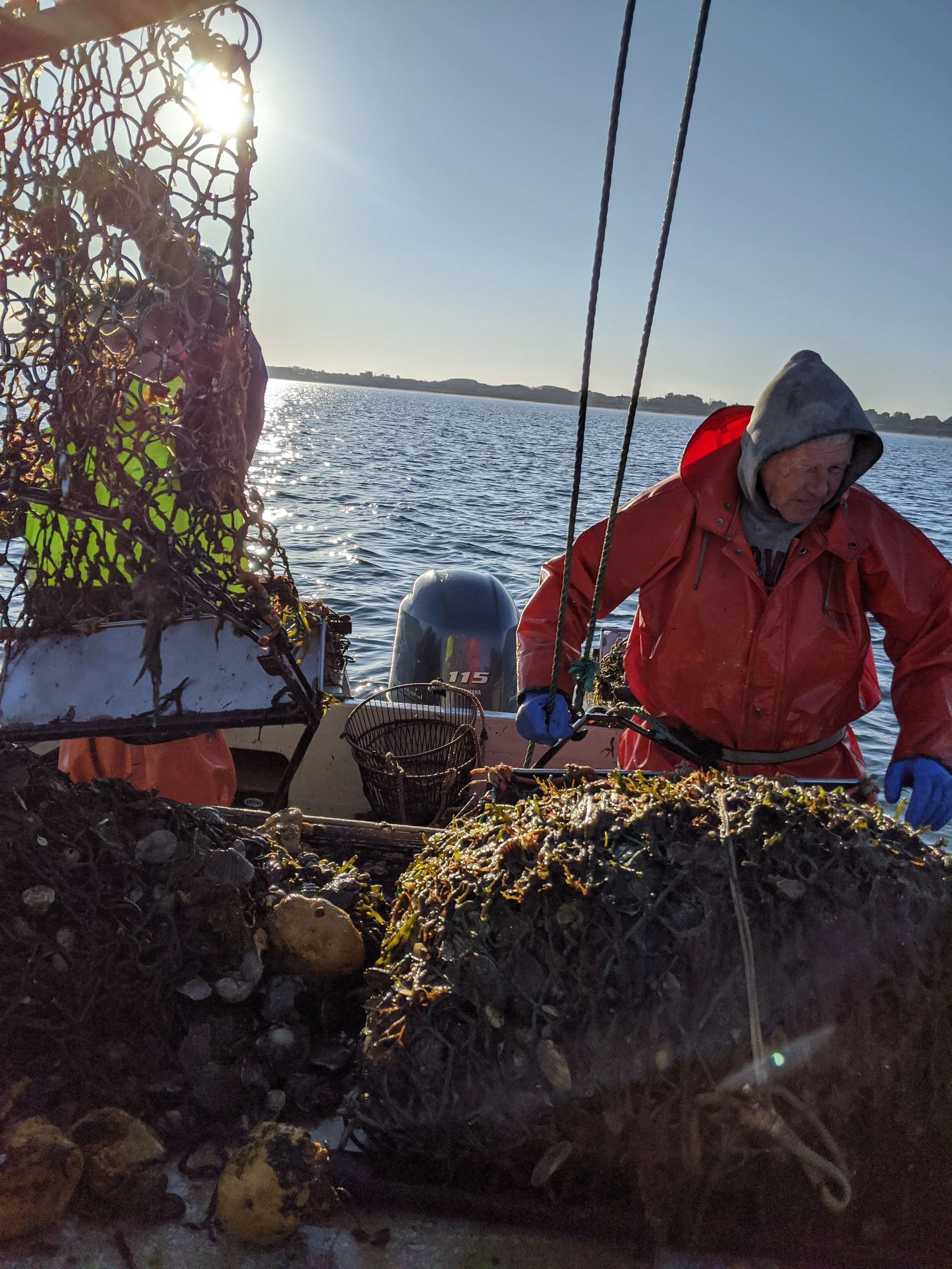Three generations of Nantucket fishermen
The Sjolunds have been making a living off the waters of Nantucket for 93 years
Fishing Heritage
Rolf Sjolund landed on Nantucket in 1929, where he discovered his passion for fishing off the coast of George's Bank. He had left his homeland of Norway at the young age of 14 and sailed with the Merchant Marine for seven years before settling on the island with his wife, Eunice, and raising their family of four children. His son, Carl Sjolund, inherited his father's love for fishing and obtained his Nantucket Bay Scallop license at the age of 12. Today, at the age of 78, Carl still scallops five days a week during the November to April season, while also generously providing safe passage to non-profits and the science community to explore the hard-to-get-to natural places around the Island.
Following in his father's footsteps, James 'Rolf' Sjolund also found his calling on the water at an early age, starting fishing with his dad when he was just eight years old. Jim pursued his passion, graduating from Mass Maritime Academy in 2010 with a Marine Transportation Degree, and began his career as a mate on tug boats, and then as a commercial long liner for Pacific Cod in the Bering Sea. Recently promoted to the Captain of the Bering Leader, a 124-foot-long line cod boat in Dutch Harbor, AK, Jim felt drawn back to Nantucket, where he purchased a used 36-foot Blue Hill Marine lobster boat and permit in the summer of 2021. With extensive upgrades made to the vessel, Jim christened the FV Julie Alice, named for his Mom & Grandmother, on September 14th, 2022. His intention is to make Nantucket his home port of call and continue his lifelong passion for fishing in these waters.
Sustainable Fishing
The American lobster resource and fishery are cooperatively managed by the states and NOAA Fisheries under the framework of the Atlantic States Marine Fisheries Commission. These are just some of the regulations we adhere to:
Each permit holder is limited to either an individual trap allocation based on historical fishing practices or an area-wide trap cap which represents the maximum number of traps that a permit holder may fish in a specific area.
Prohibition on the possession of egg-bearing lobsters and v-notched lobsters.
Gear restrictions (trap configuration requirements and prohibition on using spears)
Breakaway ropes must be used.
Fishermen must have a permit to harvest lobster in federal waters.
Limits on the minimum and maximum size of lobster that can be harvested, vary among management areas.
“I figure it’s only work if you’d rather be doing something else. You get independence. I just love being in my boat.”
- Carl Sjolund








